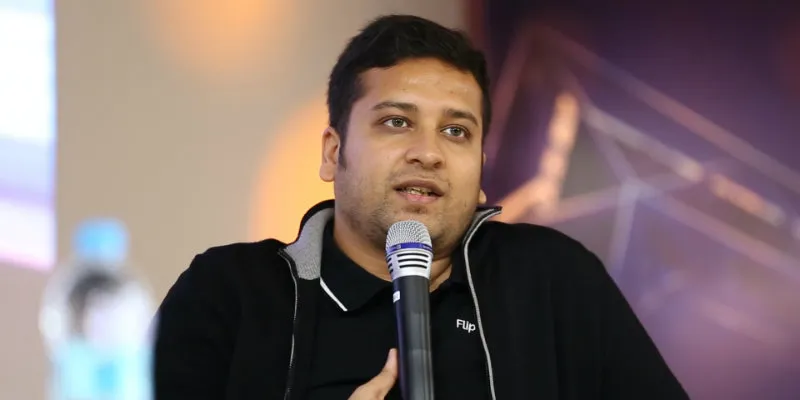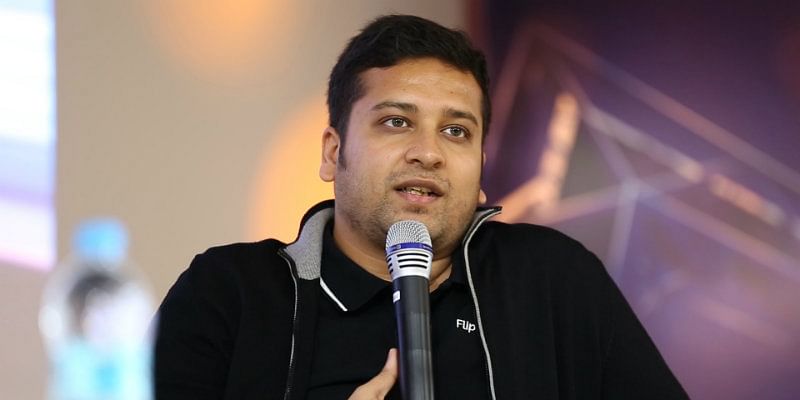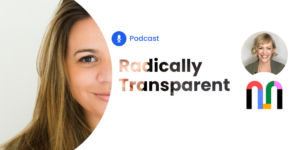From the heights of Flipkart’s amazing $16 billion sale to Walmart, it’s hard to imagine Binny Bansal was once going door-to-door delivering books for the Indian startup.
Binny’s been through periods of rapid growth and equal amounts of challenges throughout his Flipkart journey. From hiring the right talent to getting the right categories and making strategic acquisitions – you could say that it all paid off.
Today, Binny lends his expertise and insight to scores of startups looking to embark on the very same startup journey he went on 13 years ago.
It was wonderful chatting with Binny in the latest episode of Evolving For The Next Billion, as we talked through the ups and downs of the Flipkart years, his insight on India’s startup ecosystem and maturity, as well as his current role advising startups.
Hans Tung: What’s one venture that you’re most excited about these days?
Binny Bansal: It’s quite hard to choose since there are three or four ventures that I’m quite excited about. But if I had to pick, there’s an early-stage company that’s building an AI-based SaaS business in the legal space. Their vision is pretty powerful and I’m quite excited.
Hans Tung: You’ve also embarked on something that will help other founders in India to scale. What’s that about?
Binny Bansal: Yes, that’s been happening since 2014. During my time at Flipkart, I realised that many founders were going through similar challenges. We came from different verticals but we still encountered the same issues. At the time there weren’t many helplines. And I realised my own limitations – I can probably only help 10 or 15 founders at any given time.
What if I created a system that could scale and help thousands of founders at once, across all emerging startup ecosystems?
That’s how xto10x got started. We help companies and founders after they reach a particular milestone, such as after Series B or C. That’s a time when they face early-stage challenges, like scaling their business. We help with prioritisation and strategy, design and architecture of your company, changing the operating system of a company, and so on.
It’s been exciting working with, in my opinion, some of the best Indian startups I’ve seen.
Madhu Yalamarthi: For people who don’t know the Flipkart story, Binny and his college classmates Sachin worked at Amazon, early in the era before launching their own e-commerce site, Flipkart, which started as an online bookstore. Looking back, what were some milestones in your journey of Flipkart early in your time that defined Flipkart as we see today?
Binny Bansal: Back in 2007, like you said, we started with books. In the early days, we were simply trying to understand how to time go-to-market. We hadn’t raised any money, we had no money for marketing.
The first milestone was being introduced to a couple of founders who had figured out SEO in India. We learned how to optimise Flipkart. So that was free marketing in a way.
Obtaining key hires was another milestone. We hired Sujeet Kumar to do business development and operations. Malviya joined us as the first CTO. So I think with those two people coming on board, we could really hire and scale up the business 10 times or 20 times faster than what Sachin and I could do on our own.
The third one was really launching electronics, which was like a more mass category. Books in India is a very small market. You can’t go big in books. But electronics was and still is a very large category. So by launching in late 2010 and scaling it in a couple of years, I think that was really the last one I guess, which would basically put us on a much bigger scaling track.

Madhu Yalamarthi: Ecommerce wars are some of the fiercest in the Indian startup ecosystem. There’s always a new company with a new category or new approach, hoping to get a share of the pie. Your team however has managed to evolve and stay ahead of everyone. How did you enable that in your team culture?
Binny Bansal: In hindsight, I don’t think we set out to do that in particular. It was more of natural evolution. Of course we didn’t get every single thing right. Only the important ones.
I’ll give an example. Back when Flipkart was dipping into ecommerce, there was a complete lack of talent in the e-commerce sector. And there was no one with startup experience. Instinctively, our strategy was to hire people with great potential and with intrinsic value and put them on the most difficult problems. It was kind of a sink-or-swim strategy.
And looking back, it kind of put everyone on the same level. Since ecommerce was a new market, everybody was doing it for the first time. It was constantly okay to take big bets and fail. But you had to think out of the box. One had to be audacious and avoid doing things the traditional way.
So if you’re asking about culture, being bold and changing the paradigm were important tenets in Flipkart. Next to the most important which was of course, putting the customer at the centre of the business. NPS (net promoter score) was the most important metric across the company. At every meeting we started with reviewing NPS first and everything else later. By getting these things right, we solidified our principles and created Flipkart’s culture.
Hans Tung: Lots of VCs or founders focus on not being perfect. It’s easy to pick problems, problems are everywhere. But problems are not rocket science, it is to figure out the most important issues and get it right. So speaking of things that you got right, what were some of the key decisions or key people in the key roles that ended up working out well to give you a chance to make a breakout and stay ahead of the competition?
Binny Bansal: Building a startup is a very messy business. There are going to be thousands of problems needing your attention. All the time.
You have to pick the right thing to focus on and put your best people behind those. When we launched electronics after books, we faced a huge problem. There were a lot of early adopters of books and books are very cheap in India. A book is about $8-10, so people didn’t mind making online payments.

But when it came to electronics, we were trying to appeal to a larger, different crowd. A lot of them could not be online or did not want to be online. Furthermore, they did not want to pay you $100 to $200 before getting the product in hand. This was a turning point for us.
I mean, first, it took us roughly six months to even realise that this was a new problem. We went back to the drawing board and created a unique solution. It was clear that we had to establish a brand and brand trust. All this so that people would feel safe handing over $100 to $200. We also came up with cash on delivery (COD), and a 30-day ‘no questions asked’ replacement policy – the first of its kind in India. Now of course, this is a norm. But back in 2010 or 2011 there was no such precedence in the retail market.
Now, on building the brand. Obviously, we had no idea where to begin. We hired somebody from Unilever who was skilled at that, and it’s worked out well ever since.
Madhu Yalamarthi: You’ve managed to develop many innovations at the same time, like cash on delivery, reverse logistics, getting the right categories, getting the right mobile phone partnerships (e.g. Xiaomi). This was done by also getting the right talent on board. It’s tough to coordinate when everybody wants to be entrepreneurial. How did you set everyone in the right direction, while giving them enough room to grow? I mean, your key competitors also had great talent.
Binny Bansal: I think one of the reasons we were ahead was that our competition didn’t really have the talent we had. The talent pool we built was really superior to any other startup at that time, in India. So that was our secret sauce.
How did we keep everyone aligned? A lot of it was sheer energy and willpower. We were a bit lucky because we were scaling very rapidly, and new problems were emerging every six to 12 months. It never ended. After electronics, we moved to building the brand, then supply chain, cash on delivery, going into fashion, etc. We even tried our hand at payments a couple of times. I think as Hans just said, figuring out maybe three or five problems at once, and putting your best people or allocating your best people to those, and letting them be entrepreneurial.
Hans Tung: I think Xiaomi really benefited from having you as a partner to be able to sell their phones online, as the primary sales channel in India. Without you as a partner, there’s no way that they could have scaled so quickly.
Binny Bansal: That worked well for both sides. That was a big innovation in India. I think Xiaomi had done that in China in parallel. We had done that first with Motorola in India. And then when Xiaomi came in, we did that with them as well. That was a big lift-off point for us in 2013 – 2014.
Hans Tung: You mentioned that when you guys started Flipkart, there were not many people doing tech or internet startups in India. When you look at hiring talents fresh from school, versus people who have worked in the offline world. They used to do things the offline way but have more experience in general. How do you balance the two? And what type of talent is proven to be more productive in a tech startup setting?
Binny Bansal: When hiring people fresh out of college, or people who have graduated for three or four years and have done different things in life, but not really have had a structured career path, those have worked out much better in general.
However, in specific areas, like in building a brand, or in accounting, it’s the area where knowledge and experience are more important, you still need to get in people with experience and help them adjust to the messy startup environment. But in other areas, like product and supply chain operations, the fresh talent with very high potential worked out much better.
Besides those two though, there is a third option. Thanks to the evolution of the ecosystem, there are people who have had startup experience. So that’s my preference now. The fourth would be to find somebody who only had corporate experience, no startup experience, but can be flexible enough to work in a messy environment.
Hans Tung: With any emerging ecosystem, the first 10 years are tough, because you need to gather enough people to go through the first fight and be successful. Once that happens, the next decade goes much faster, because more people will get to spread the gospel, share and deepen it.
Binny Bansal: That’s what I’m seeing right now. In the second 10-year cycle, companies are able to scale much faster. We’re trying to accelerate with xto10x as well.
Madhu Yalamarthi: Hans, you’ve seen ecommerce wars around the world, in China, in the US, and in other geographies as well. You’ve also seen several other intense wars in mobility, edtech in other sectors as well. From your vantage point, what made Flipkart successful? And where do you see India’s journey now in that stage?
Hans Tung: For Flipkart, having that first batch of executives, not just the founders, but at each functional level, who has seen success and who can help companies scale is incredibly important.
And in the first 10 years, a lot of success can be led by having superior operations. You do this by managing your supply chain, selling, market and brand better.
Now the next 10 years, you have a critical mass of online users. Now comes product-led growth. It has to be
a well-designed, attractive product such as people will want to use it. This is different from the first phase of operations-led growth. But the leverage comes from having a superior product.
So now, where the Indian startup ecosystem is at in terms of maturity, is where people like Binny can share their valuable expertise. Now you have seasoned executives. Now there are more product managers who are trained in a variety of places to be able to apply what they know to the Indian market. They now have more users. Now you have a base to build upon, and at a much quicker pace than that in the first 10 years. We think that some of the best Indian startups will have a chance to build a global product. That might happen in the next five years, or it might be sooner. It’s very exciting.
Binny Bansal: Agree with what Hans said. I would just say probably Indian companies going global can happen even sooner. It’s already started happening in the SaaS area. One of my invested companies is also an early pioneer that started in India in 2011. Presently, 90 percent of the business is outside India, actually in the West. It’s accelerating fast.
Hans Tung: In China there was Musical.ly coming out in 2015, followed by TikTok in 2017. It took time but that was already fast. Who knows what India will bring?
Binny Bansal: I think the main difference in China and India is that the Chinese market itself is so big such that Chinese entrepreneurs don’t have to think outside the mainland. In India, the growth is still slower than China.
Today, accessing the global market is much easier than it was when China’s startup ecosystem was evolving. So there are some circumstances that work in India’s favour when it comes to going global.
Hans Tung: It did seem unattainable at first, but TikTok did it and now everyone else can dream of that possibility. That’s the beauty of the startup ecosystem. Be the first to make it through. And then everyone else will be moving at a much faster pace, which is super exciting.
Madhu Yalamarthi: A few more questions on the Flipkart journey. You wrote the playbook for M&As in the Indian startup ecosystem; you’ve had a very successful integration with Myntra. Even today, it’s been a huge value creation of the Flipkart journey. How did you approach M&As and how did you go about integrating that value into the organization?
Binny Bansal: We used M&As very strategically. I’ll walk you through it.
At the time we just launched and as mentioned we were big in books. The next natural step was for us to win the video and music category. So we started selling CDs and DVDs. We acquired a company called Mime360, which was a B2B platform for music in India. The acquisition didn’t work out as expected as it was too early for digital music – wrong timing. But, the talent there played different leadership roles in the company.
The next important acquisition was Myntra. At that time it was clear to us that winning fashion was the most important thing for the company. We had known Mukesh, who was the co-founder of Myntra for five years, we had the same investors. Before we started fashion, we had no strategy of acquiring Myntra, we had no idea what it took to win fashion. Basically, our strategy was to first do it on our own and see how it works. What is fashion all about? What is the category all about? After a year and a half of doing it on our own, we had a good appreciation for the similarities, and most importantly the differences between Myntra and Flipkart.
Flipkart is a horizontal player, our core value was really about efficiency, scale, technology, etc. Myntra serves as a fashion-first company, so it has a strong fashion DNA, and it is appealing to much more fashion-conscious customers, while Flipkart was meant for mass customers. So, there were enough differences for us to acquire the company and keep them independent, and not merge with them. If they were very similar to us, we wouldn’t have done the acquisition. But they were doing something very unique. That was a reason to acquire. That’s why it has worked as well. We’ve had more than two-thirds of the online shares of the fashion industry now for the last six to seven years since we’ve made the acquisition. And that hasn’t changed.
Madhu Yalamarthi: Your M&A logic makes sense, of course. I understand this as key to most M&As, but very few of these work out in reality. How did you make it work?
Binny Bansal: I would give a lot of credit to Mukesh. I think he had a clear vision and thought process on how to make it work, especially on the people side, on how we will keep the teams motivated.
I think on Flipkart’s side, it was best practice to be gracious and not boast about being better or bigger. The best decision we made was not integrating Myntra with Flipkart.
Madhu Yalamarthi: How did you grow as an individual in that period?
Binny Bansal: I think individual personal growth only comes when things are not working. So, when things are going great, there is absolutely no growth, because you just feel you’re on top of the world in everything. And there’s nothing to learn.
Thankfully in a startup, there’s always a point when things don’t work. At that point you need to pause and reflect. I have made that into a habit now.
Hans Tung: When you look at what’s worked in China and the US, and apply that to India, what has applied itself well in the Indian context?
Binny Basal: There are some broad ways it has worked, but largely, ecommerce is so different especially with how you execute in China vs US vs India. For example, in India, we had a very low spend on direct digital marketing on Google or Facebook. Our customer acquisition came by building a brand and getting people directly onto Flipkart, not getting customers from performance marketing.
Whereas in the US, building a brand is likely way more expensive.
Secondly, in India, we had no partners for the supply chain. Nobody had done things at scale. You have to do the full stack, from end-to-end on your own. Whereas in China, Alibaba was more of a marketplace and there was a manufacturing base plus a strong supply chain. In the US, there were UPS FedEx, with care for the last mile as well. So overall there are some similarities, but as you get closer to the ground, there are more differences than you expect.
Hans Tung: Let’s move on to xto10x. I heard about the framework that you guys laid out, it is quite interesting. It is different from Alibaba University or Tencent University that I have seen. It’s very practical for India. It really helps founders to get a sense of what it takes to go from x to 10x, literally. What are some of the interesting anecdotes that you can share?
Binny Bansal: A lot of the companies are in that same transition going from the early adopters to a mass market, and because of that they need to look at a very different market segment to scale.
I think that realisation itself, and then thinking of the segment and designing the go-to-market strategy, maybe tweaking the product. That whole process was a big ‘Aha!’ moment for us. For some of the companies in the xto10x cohorts, it seemed a lot of them were struggling with just hiring experienced people and trying to make that work without successful
So that’s where you need to have a framework of instead hiring people with startup experience, or just putting your best leaders in your biggest problems, and finally only hiring experienced, non-startup people in very specific roles. That ended up creating a lot of clarity for them in hiring for leadership and organizing people around them.
Lastly as companies scale from 50 people to 200 or 300 people, taking a close look at the company operating strategy is key. Converting that strategy into execution and getting work done becomes a challenge as well. Using a system like OKR (objectives and key results), or something similar to that. That turned out to be very helpful for the founders.
Hans Tung: What is your definition of success? You already have a huge exit with Flipkart. You’re doing xto10x.
Binny Bansal: I’m in a phase where I’m just doing things that I love to do. So xto10x is just helping entrepreneurs to scale. I just love working with entrepreneurs. I love investing in companies where I know there are people who are passionate about the space or the idea.
Madhu Yalamarthi: The last question from my side is, you’ve been an inspiration for a generation of India and for generations to come. What is your wisdom for the younger generation of people looking up to you, what are sort of the principles that you’d tell them?
Binny Bansal: I think I would say optimising your decision making, especially in the early days. Focus on learning, rather than outcomes.
What are you going to learn? What are you going to work with? I think those are probably the two most important questions to answer when making career decisions, especially early in your career, because getting that right again can have an asymmetric outcome later.
Keep looking till you find something you really love or feel passionate about. When you find something that you’re passionate about, it literally doesn’t feel like work, it feels like something you would want to do 20 hours a day. I think that’s the most important thing.
Listen to the podcast here





![Read more about the article [Funding alert] Aye Finance raises Rs 75 Cr debt from Triple Jump, Northern Arc](https://blog.digitalsevaa.com/wp-content/uploads/2022/03/Debt-Funding_YourStory-feature-image1565522421920-300x150.png)




